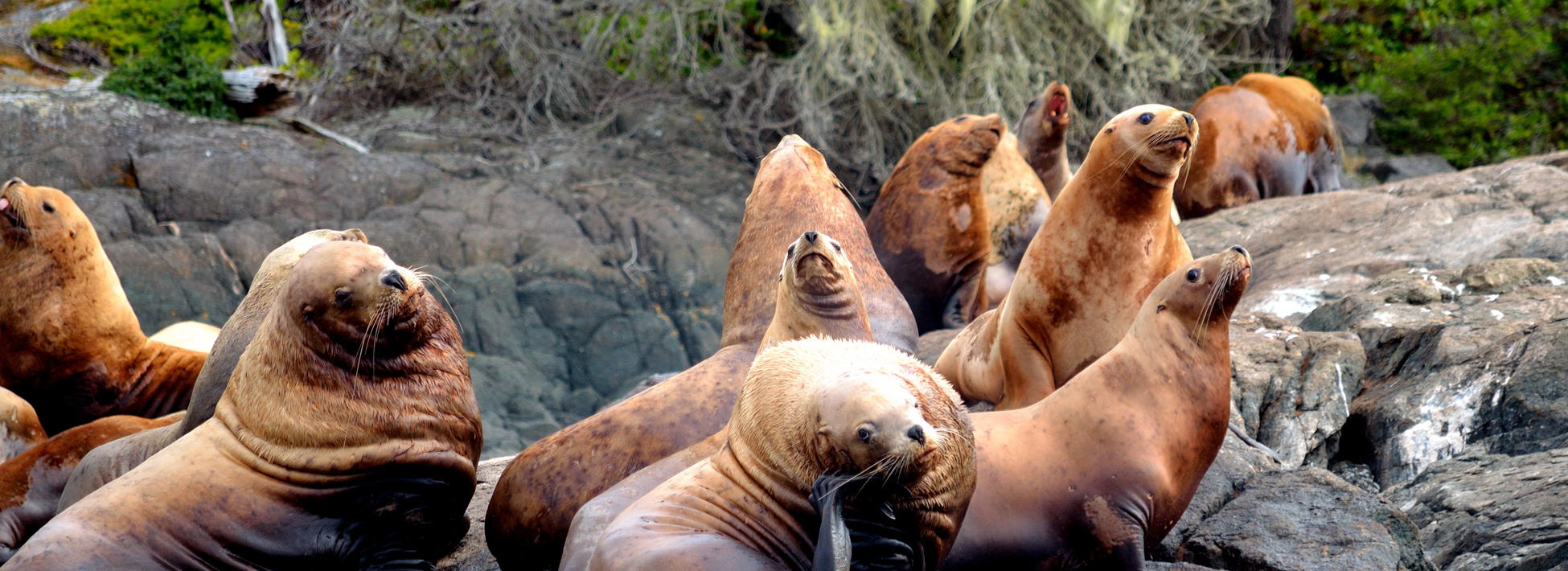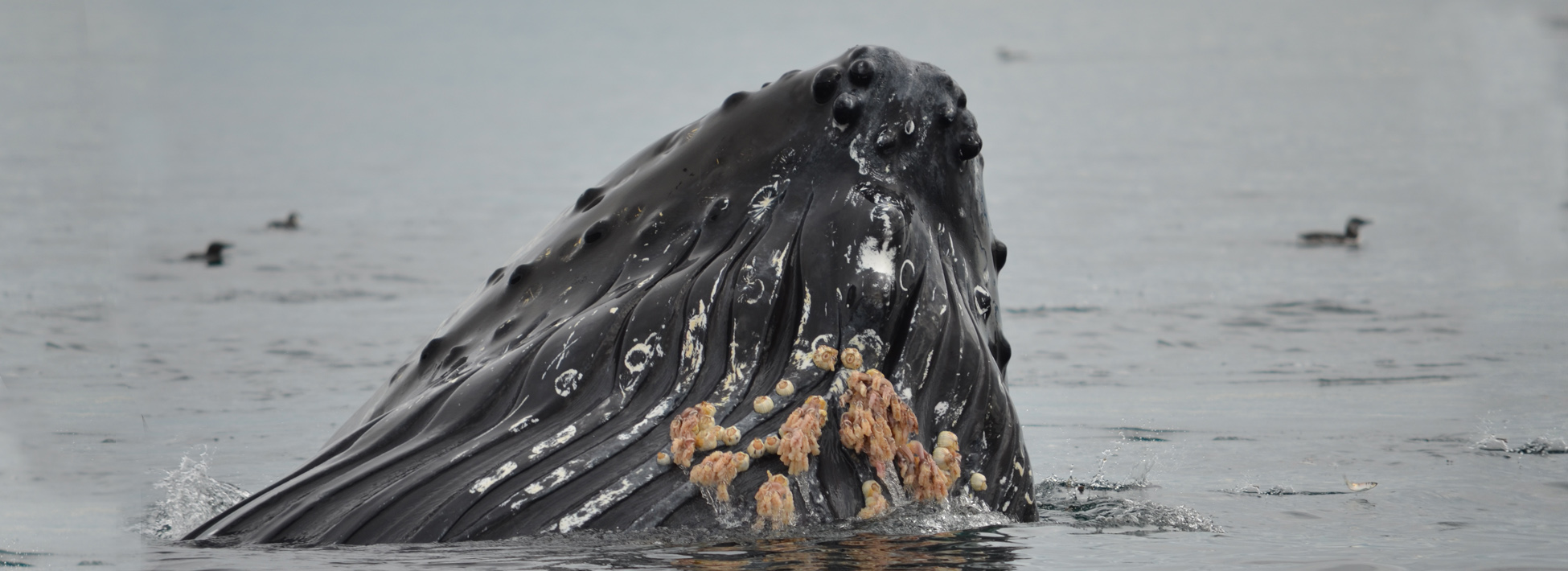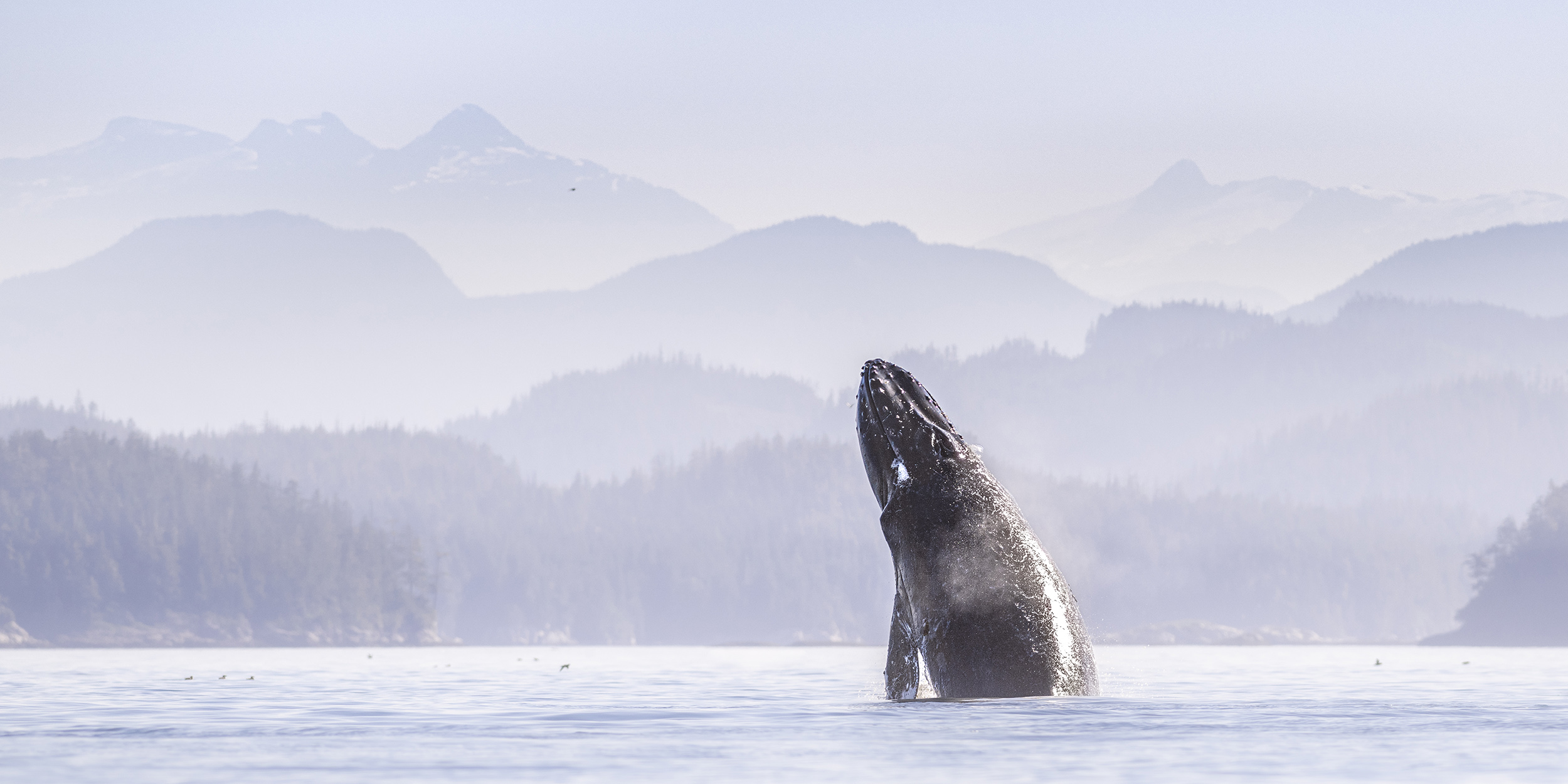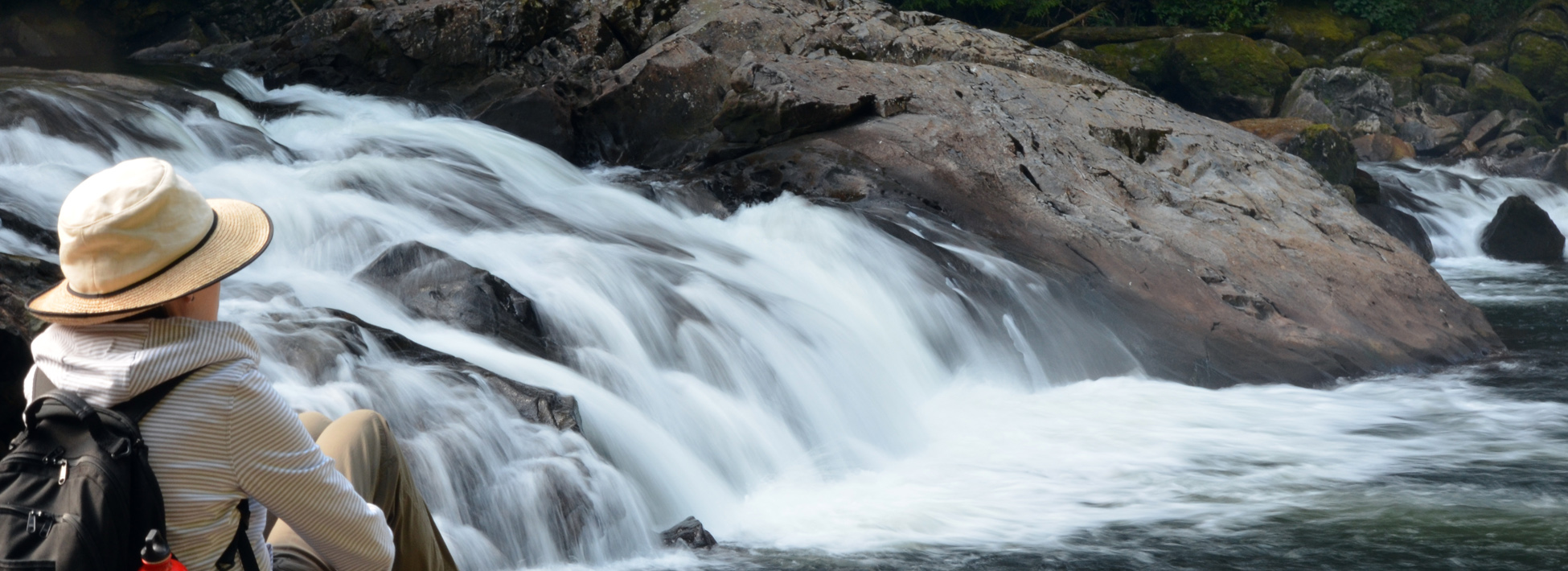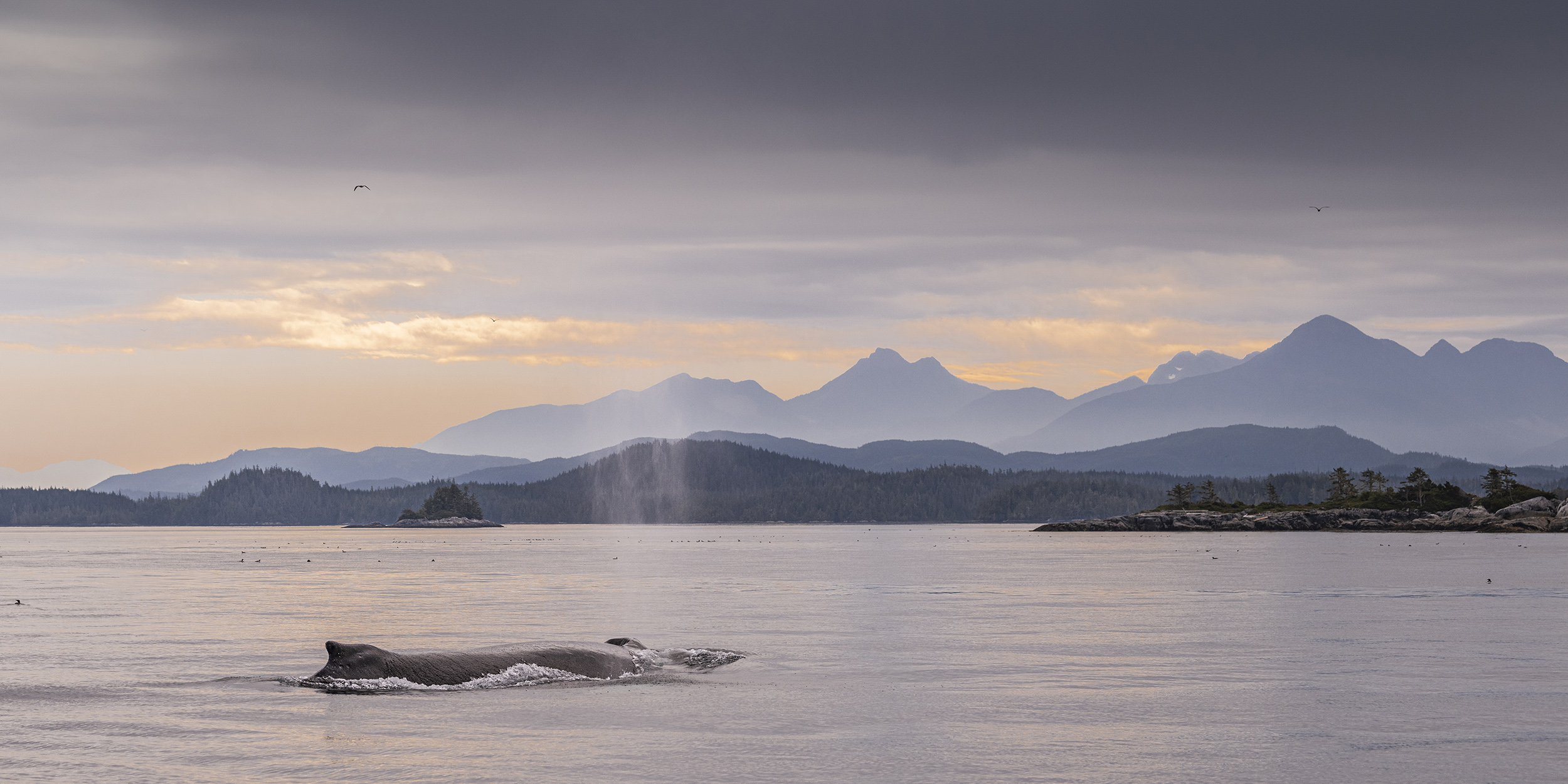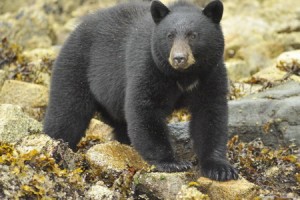Every tour from the lodge involves wildlife viewing in this case a rather large black bear. This viewing was on a morning grizzly bear trip up Knight Inlet. We leave the lodge about eight o’clock and it takes a little over an hour to reach the grizzly watching area but along the way we frequently see black bears. This one enjoying breakfast on the beach, turning over rocks, eating barnacles or muscles, small crabs or anything that moves, as well as seaweed. This is a good-sized bear and notice the white patch on the chest it is common. “OK so we can’t all be grizzlies!” was Harold Bailey’s comment for the photo he provided from his UK was the first week of September.
Bald Eagles

Bald Eagles are frequently sighted in our area. At times they can be seen in large numbers. This is usually where food supplies are high. For example this could be in areas with high concentrations of baitfish or along the rivers in the fall when the salmon are spawning. They are not migratory, but do move around with the food supply. As mentioned earlier when the salmon are spawning we often see many along the rivers, while there will be fewer along the coastline. With little need for camouflage their white head and tail feathers can be spotted easily. The female is slightly larger and her white head extends down a bit farther onto the body, but it is subtle. It takes these birds 4.5 – 5 years to acquire this unique plumage. As juveniles they are a brown colour. With exceptional eyesight and the ability to view 270 degrees they are understandably often seen in high perches and in trees near points and passageways.
Visit our Blog